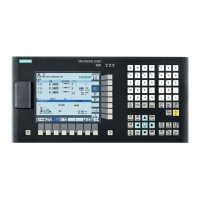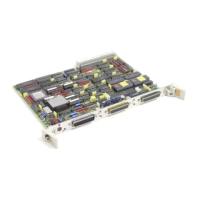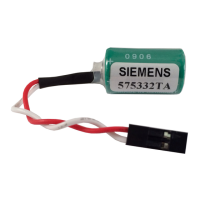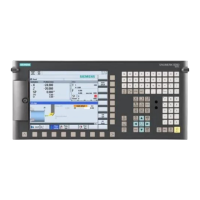Cycles
9.8 Plunge-cutting - CYCLE410
Cylindrical grinding
170 Programming and Operating Manual, 07/2009, 6FC5398-4CP10-2BA0
9.8 Plunge-cutting - CYCLE410
Programming
CYCLE410(N_SITZ, X_SOLL, Z_ST, B_ART, A_LU, A_SR, A_SL, A_FSA, F_SR, F_SL,
F_FSL, TIME, MZ, KS, F_KS, OSW, F_OSCILL, UWERK)
Parameter
Table 9- 4 Parameters of CYCLE410
Parameter Data type Meaning
N_SITZ INT Seat number
X_SOLL REAL Setpoint diameter (abs.)
Z_ST REAL Starting position in Z (abs.)
B_ART INT Machining type:
1=roughing
2=finishing+fine-finishing
3=roughing+finishing+fine-finishing
A_LU REAL Air allowance (incr.)
A_SR REAL Roughing allowance (incr.)
A_SL REAL Finishing allowance (incr.)
A_FSA REAL Fine-finishing allowance (incr.)
F_SR REAL Feedrate for roughing
F_SL REAL Feedrate for finishing
F_FSL REAL Feedrate for fine-finishing
TIME REAL Sparking-out time
MZ INT Measurement control Yes=1 / No=0
KS INT Acoustic emission sensor yes=1 / no=0
F_KS REAL Feedrate for air grinding [mm/min]
OSW REAL Reciprocation travel (incr.)
F_OSCILL REAL Reciprocation speed
UWERK REAL Workpiece peripheral speed [m/min]
Function
The plunge-cut cycle is called for the machining of a cylindrical seat if the wheel width is
greater than or equal to the width of the seat to be machined. Either straight or inclined
wheels are used.
An acoustic emission sensor can be used to bridge the distance between the starting point
and the actual workpiece surface within an optimum time by sparking.
Parallel to the grinding process, a short-travel reciprocation can be activated in the Z
direction via reciprocation commands.
The workpieces can be checked for their finished dimensions and the individual feedrates
can be switched in the various technological sections by means of a measurement control
(caliper) that is used during actual machining.
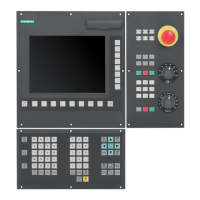
